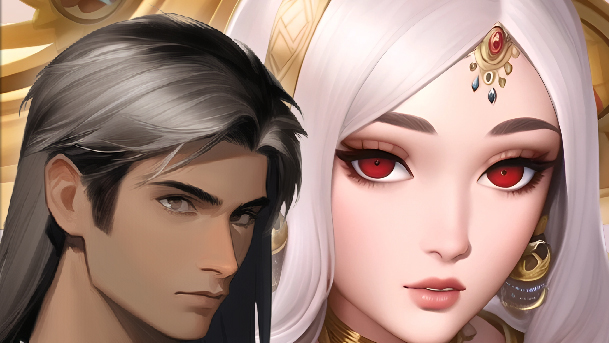Greetings travelers. We here at Tellest had the wonderful opportunity to run a write-up on a phenomenal fantasy adventure recently. Ujwal Vujjini’s The Mystery of the High Maiden is a modern take on traditional fantasy, built out of a new setting that leaves the story feeling fresh and lively. We also had a great time speaking to the author about his world and the process of bringing it to life, and you can read more about it here.
Tellest: Hello Ujwal! I wanted to tell you that I appreciate you spending your time revealing a bit more about your books and your process, as I know you must be busy on the creative side of working on your stories. I always feel lucky to talk to a talented storyteller and worldbuilder, and I’m sure that readers are going to have a great time learning some of the secrets behind your series and your backstory.
Ujwal Vujjini: Thank you Tellest! And yes, I spend quite a bit of time world-building/stealing from mythology or history haha.
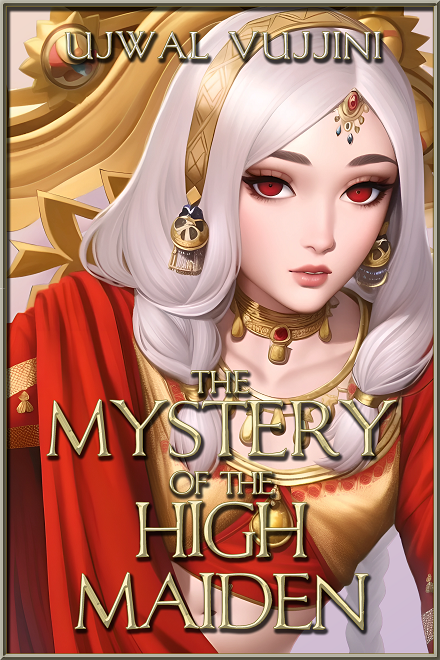
T: I always like to start things off by learning more about how an author became interested in writing, and in fantasy in general. What inspired you to tell stories like the ones you’re telling now? Were there any storytellers that stick out in your mind as being the ones that roped you in and never let go?
UV: So, writing was always a bit of a nuisance to me. Until I started writing seriously with this world I developed, I was mainly stuck on the academic side, whether it be English papers or general research papers. Interestingly enough, a lot of my teachers said my writing was very good for where I was but trying to write a story was a bit out of my league, or at least I felt that at the time. I actually spent more time drawing comics, but one thing I found lacking was the writing aspect, where after say maybe the first chapter or first arc I would just drop it, because I didn’t know where else to go. So, after reading a lot of mythological, religious, and historical works (especially the Silmarillion) I decided I wanted to make a story similar in style to these works. That’s where my first story, The Vaiatnemarhahn (good luck pronouncing this), came in, which is as mythological and epic in scope as it gets with my work. I took it to a writing group one day, and while they were impressed by the scope and writing, they had no understanding or context to make sense of what was going on. So that’s when I decided to write the Marhanyam to be the bridge to that work, almost sort of like how the Hobbit is to the Lord of the Rings is to the Silmarillion.
T: You mentioned that you used to spend time drawing comics earlier on. Now that some of your Marhanyam stories are completed, have you ever thought about going back and giving them new life in comic form? And have you ever imagined your work in other formats, like television or cinema?
UV: I have, but I also haven’t drawn seriously in a long while. Perhaps if I have time, I can get back into it and see where it takes me. As for other formats, I have imagined them as either TV shows, or cinema, or even video games, but I would hope if they were translated to any of those mediums that they keep a more animated look rather than live-action. I can’t help but laugh when I think about real people portraying my characters, when they perform super-human feats.
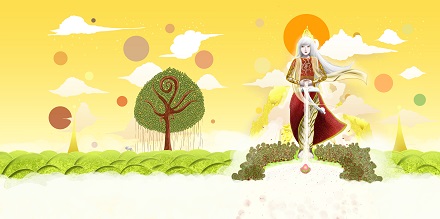
T: When you think of any adaptations of books or even video games, do you think any of them have been done right, given the material? Do you think perhaps another format, like animation as you had recommended, might have saved the ones that people did not enjoy as much?
UV: It really depends. If you take the Witcher series for example, I think it was adapted almost perfectly from book to video game. But that was also because of the fact that the games themselves took place after the books and were sort of a “what-if” scenario, which allowed a lot of creative freedom for the developers and resulted in few plot holes. If they tried to do it in the same timespan as the books then it might be more iffy, depending on how much of the narrative elements would translate well into gameplay. For the adaptations that failed, I think animation could’ve indeed helped them, but it’s all dependent on execution from the directors themselves. Whether their vision really falls in line with the spirit of the work.
T: One of the things that I’m most impressed with in the Marhanyam Children of All series is the constructed language that you’ve built for your world. It definitely helps to give Ārhmanhaḥ a personality all its own. How early on in your process did you determine you were going to do that, and how much of a challenge was it to ensure you were doing it well?
UV: I decided it pretty early when I first developed the world. I wanted to follow a similar process to what Tolkien did and create a world first with languages in mind. Now at the beginning I was just making up words by mixing various words and syllables from several different languages like Latin, Greek, Sanskrit, Avestan, Hebrew etc. But later on, as I started coming down to writing names, locales, and provinces, I needed greater consistency. Seeing as how Sanskrit and Avestan hasn’t been used too often to develop conlangs, and that I wanted this world to primarily have its culture, history, and religion based on the users of those languages, I decided to develop the bulk of root words through those while interspersing phonetical changes to differentiate it. In that way my conlang is a sort of a pseudo-Indo-Iranian cousin. With this said, I haven’t developed formal grammar, as its primary use is mainly in hymns and poems where the grammatical rules are often broken. By the time of the Marhanyam it has solely become a liturgical language with only greater than life beings speaking it on a regular basis.
T: I don’t know that I would expect this of anyone in most cases, but then, you’ve spent a considerable amount of time ensuring that everything fits in its place—or at least you make it look like you do! How fluent are you in the language you’ve created? Are you able to go back and read the Ārhmanhaḥn words you’ve written without any context and remember what it meant? How easy is it for someone who would be new to your world to acclimate to everything?
UV: Not very fluent. I have an understanding of what certain words mean based on their association to the Sanskrit and Avestan roots I’ve used but that’s about the extent of it. I’m actually pretty bad with learning languages haha.
T: You make it look easy and effortless. It feels very much like a strong homage to Tolkien but with more eastern influences.
What are other ways that you were able to integrate cultures that most people who read more traditional western fantasy will enjoy here?
UV: I put varieties of descriptions of food, religions, hand gestures, certain actions, and even ideas that are reminiscent of cultures of our world. By the time the Marhanyam takes place, while there’s a very strong religious culture that is almost universal throughout the world, the more social aspects and even languages differ in some ways greatly. It becomes more apparent in the third book once the group actually meets folk who are descendants of displaced peoples from thousands of years ago.
T: Your world is so vast and complex; it must be a journey unto itself to make sure that you’re keeping up with all the information. Do you have a specific tool that you use to sort of compile all the details? Do you have a sort of world bible that you’ve created that you reach back to?
UV: I have several long text documents for both general notes and whole outlines. I also made dictionaries for the conlangs, as well as appendices for the books themselves. I actually find it more difficult to keep dates and distances covered by the group in order, given that their journey is going to be a much longer one. I often have to refer to it every time they move locations just to keep the seasons and months in order as well as them, particularly Tumbmar, growing older.
T: I know that you were really into video games and the like, and that they likely played a big part in forming your love for the genre. Have you worked the world of Ārhmanhaḥ into any would-be game projects, or even things like tabletop adventures?
UV: I had an idea for an RPG adventure game that would utilize this world, but I have yet to get around to actually developing it. Tabletop is something I haven’t explored, might be worthwhile to consider it.
T: It feels like most fantasy has some sort of overlap on the Venn diagram with potential RPG experiences, especially when they expose players to new creatures and places. What sort of things would you be eager to show off of your world that you would want people to play with?
UV: Possibly different races that I’ve made. Now some of them share attributes with already existing races with just their names changed, but some are wholly unique but haven’t been introduced in the story as of yet. Another thing could be the use of elemental signs and producing new elements to use based on combinations and such. Maybe another thing to add on to that would be the use of the language itself, in the form of mantras, for producing attacks and spells which is something I’ve directly incorporated as part of the LitRPG system in Past Death Itself.
T: You released your book in the midst of the pandemic. Did that have any bearing on the why and when of putting your world together? Or was this in motion long before COVID hit?
UV: The idea was there before COVID, but given that I was working remotely, it gave me the time to finally put pen to paper and get these ideas out of my head.
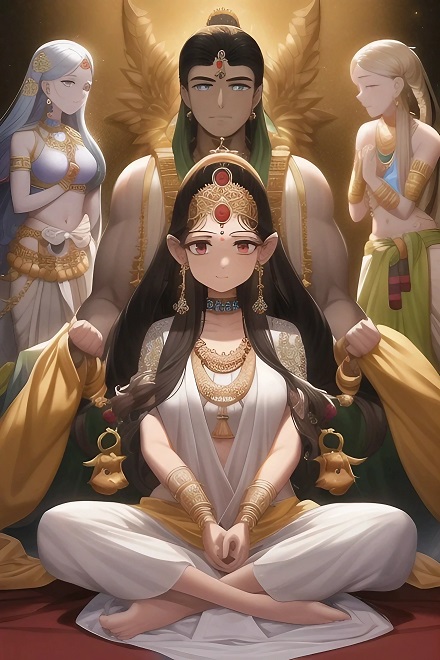
T: Speaking of time, that is one thing that people don’t realize takes so much out of an author! While writing the story takes a considerable amount of time and creativity, that’s not even half the story, so to speak. What have your experiences been since releasing your stories? Have there been challenges in getting them out in front of people?
UV: There’s been a fair bit of challenge mainly by exposure. Due to the saturation of the book and writing market as a whole you can’t just have a solid and well-executed idea, but one that’s very much marketable. I sank nearly $16,000 in the marketing, editing, audio production effort only to end up with very few leads. I did learn a lot from doing it, but I think I need to think more on how I can reach a wider audience on a tighter budget.
T: Have you explored things like BookTok, or reaching out to influencers to see if they could help to push word about your books?
UV: I haven’t heard of BookTok, but influencers, at least the ones I’ve purchased promotional gigs from, haven’t really produced much results. I don’t want to sound hopeless, but this story might just not be one that’s really marketable. Maybe it’s the cover, or perhaps the blurb, or just the way the story even starts or is written. Perhaps I would have better luck at traditional publishing but it’s a matter of whether I would be willing to part with full creative control assuming one would pick this up.
T: The Marhanyam Children of All series is not the only project that you’ve been working on. You also have a LitRPG story that you’re telling on Royal Road. Did your traditional fantasy series begin the same way, or was that always a more personal story that you wrote without insight from others?
UV: It was more of a personal story that I only put online due to my friend suggesting it. Originally, I was planning on finishing the entire thing, which may have taken years, but something told me that I should release it sooner and start getting feedback and perhaps sales now.
T: These days, it’s quicker and easier than ever to see how readers and fans respond to stories. Have you received a lot of great feedback? And in turn, has that helped to encourage you to continue along with your literary universe?
UV: Yes I’ve received a lot of feedback, specifically on sites like Royal Road. The reception has been glowing for my work and it has spurned me into continuing writing in this universe. I hope with my new series I can gain greater traction, which looking at the follower rate gives me some hope that I can possibly convert some of these people into reading this one.
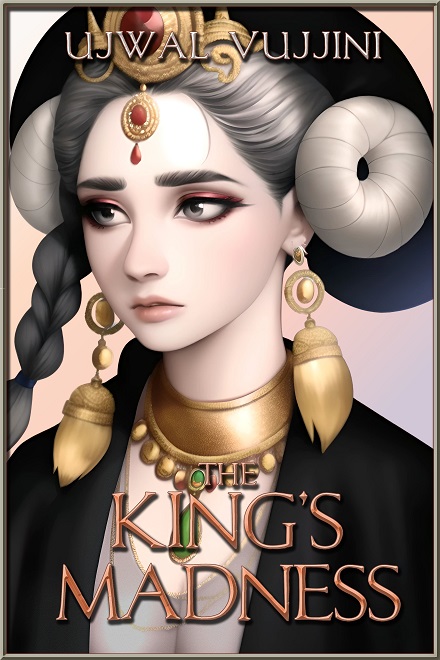
T: With what you mentioned in mind, do you think that the bigger challenge is just getting the word out there? Sometimes it seems like great authors have wonderful books that just go unread for one reason or another.
UV: That seems to be the case. I don’t have enough data to see how many people are visiting the page versus how many are actually reading, but it’s something I noticed on Amazon as well where it just seems like an uphill battle to try and get some exposure. There’s a pretty high chance that this story might not even meet the success that I want it to until after I pass away. That seems to be the case for a lot of now notable authors out there.
T: Your book was originally formatted in an entirely different way. How did it make sense to be condensed into two separate books, and how has that changed the way you interpret the rest of the series as you work on bringing your world and your stories to life?
UV: Right, so I originally had the now two separate books combined into one called “The Marhahnyahm of Tumbmar: Book I – Of Revealing Contentions” but I quickly realized that this kind of a title wasn’t marketable in the current landscape. So, I separated the books in half at a junction that looked reasonable and then made two different titles for them. I don’t think this influences the way I’m writing too much, because I still see this entire series as being one body of work that just has arbitrary cutoffs for the purpose of structuring volumes/books for marketing.
T: If your work is somehow reflective of Tolkien’s in some ways, that adjustment to the book compositions bears a striking resemblance to what he had to do as well.
Do you think that the length of your books are in a sweet spot at this point, and do you think the later volumes are going to be around that same page count?
UV: I think they reach that sweet spot, and yes, the other volumes I think will cleanly hit the current range I’m expecting. Since the entire story has already been outlined, segmenting them into the various books/volumes is fairly trivial.
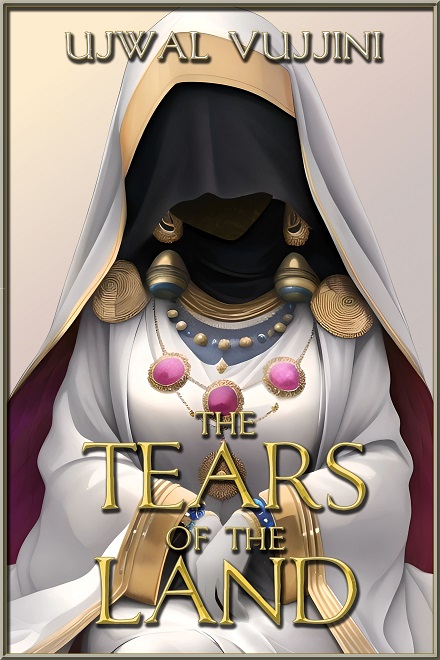
T: Tolkien also was no stranger to spinoff books. While you likely have the main series to look forward to, do you ever find yourself tantalized by a character’s backstory and wonder about writing content for them that gives them greater context?
UV: Oh, many times! I have ideas and entire plotlines either going about my head or already written down. Part of those back stories might be elaborated in Past Death Itself, given the time frame it takes place. But I don’t want to tackle them just yet, until I have more of a base for the world-building. While I already have quite a bit, it’s still not nearly enough, when you consider that the entire extent of the “current” cycle of this world spans some four million years. That’s a lot of time for things and customs and practices to change substantially.
T: You’ve released three books so far in your main series, but your world is so vast, I get a sense that you have no plans on leaving it behind just yet. Do you have other books set in Ārhmanhaḥ that you are currently working on? And if so, is there anything you can share about them?
UV: Yes, the very first work that’s currently unpublished that started this entire process called The Vaiatnemarhahn. That would essentially be the equivalent of the Silmarillion and reads almost like a mix of a religious, mythological, and historical work. And the second would be Past Death Itself, which as you mentioned before is a LitRPG set in the same world. Now I need to put the disclaimer that Ārhmanhaḥ is not a game world, but I thought that putting such elements common in the genre would make a more appealing reading experience. The world is still its own, and I’ve gone about putting those elements in a way that doesn’t destroy the overall logic of its rules.
T: Is that at a point where you feel comfortable with it, or is it undergoing constant updates in order to keep it in line with the lore that you unveil in the rest of the Marhanyam series?
UV: I feel so. The system of Past Death Itself is one that’s more skill based rather than stat based. And activation mechanisms vary from either using mantras or just using the skill in question. I visually represent it using the conlang, giving me good reason to keep developing the language which is a plus for me!
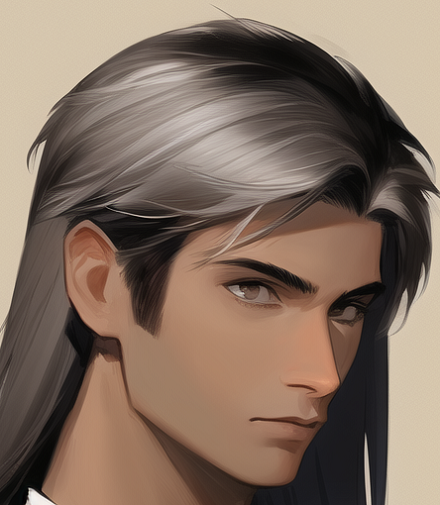
T: If someone wanted to learn more about you or Ārhmanhaḥ, where could they go? Do you prefer people to go to your website, or are you more active on a specific social media channel?
UV: Yes I have a website https://www.ujwalvujjini.com/ as well as two sites where I’ve uploaded my work for free: https://www.scribblehub.com/series/307264/the-mystery-of-the-high-maiden-marhahnyahm/ and https://www.royalroad.com/fiction/44291/the-mystery-of-the-high-maiden-marhahnyahm
T: Ujwal, I wanted to thank you for sharing your journey with us so far, and for giving us a few sneak peeks into what the future of Ārhmanhaḥ will be. It was a real joy, and I am very excited for people to see your passion and dedication to this world!
UV: Thank you Tellest! This was a great conversation and I enjoyed answering all your questions! Hope anyone who comes across my works enjoys reading them as much as I do writing them!
Once again, I’d like to offer my sincere thanks to Ujwal Vujjini for spending time with us and sharing parts of his world and his journey. He’s certainly crafted an amazing universe that I hope people will be excited to explore. You can begin your adventure into Ārhmanhaḥ by checking out his first book, The Mystery of the High Maiden: An Epic Fantasy Adventure Saga (Marhanyam Children of All Book 1) on Amazon today!
Michael DeAngelo
Latest posts by Michael DeAngelo (see all)
- Fantasy Promo – Quinine - July 25, 2024
- Sigil Art – Grim’s Hold - July 24, 2024
- Fantasy Promo – Light the Shadows (Under Elfhame’s Stars) - July 24, 2024
